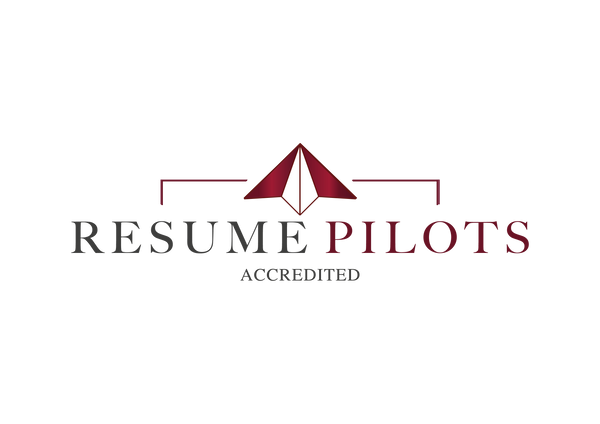
ATS-Friendly Resume Formatting: How to Pass Scans and Impress Recruiters
📌 This article is part of our Quick Wins & ATS Mastery series. If you’re just joining us, start with The 10-Minute ATS Fix: Simple Résumé Tweaks That Boost Interviews. We’ve also covered Résumé Keywords: How to Mirror Job Descriptions Without Keyword Stuffing. This post builds on those insights, and together with four more, will lead into our 1,500-word anchor guide tying every strategy together.
Applicant tracking systems (ATS) don’t just filter résumés by keywords — they also need to read your formatting. If your résumé isn’t structured in a way the system understands, key details like job titles, dates, or skills can be misread or dropped completely.
On the flip side, résumés that are stripped down to please ATS often end up looking dull, plain, or even outdated to the human recruiter who eventually reads them.
The goal is balance: a résumé that parses cleanly through software but still looks polished and professional to people. Here’s how to get it right.
Why Résumé Formatting Impacts ATS
ATS software processes your résumé from top to bottom, mapping words into predefined fields. Formatting choices can make or break how well that happens.
For example:
- Sidebars or two-column designs can cause information to appear in the wrong order.
- Logos, graphics, or icons may be ignored completely.
- Complex fonts or symbols can appear as random characters.
👉 FAQ: What is ATS-friendly résumé formatting?
It’s a clean, text-based design that avoids complex layouts, graphics, and unusual fonts — ensuring software can scan your résumé accurately.
Formatting Pitfalls That Cause Parsing Errors
Even highly qualified candidates can be overlooked if their résumé formatting confuses the system. Common mistakes include:
- Two-column designs or tables: Often unreadable by ATS.
- Headers/footers with key details: Dates or contact info may not be picked up.
- Creative fonts: Stick with simple, professional fonts like Arial or Calibri.
- Overly styled job titles: Recruiters and ATS both prefer clarity.
👉 FAQ: Can ATS read tables or multiple columns?
Not reliably. Many systems scramble the content or ignore it entirely, which means crucial information never makes it to the recruiter.
How to Build a Résumé That Works for Both
1. Keep the Layout Linear
Use a single-column structure with clear section breaks. Headings like Professional Experience, Education, Skills, and Summary work best.
2. Stick With Standard Headings
Avoid rebranding sections with creative labels like “My Career Journey”. Recruiters and ATS alike expect Experience or Work History.
👉 FAQ: Should résumé headings be creative?
No. Stick with conventional titles — they’re easier for ATS to parse and instantly recognizable to recruiters.
3. Use Simple Styling for Emphasis
Bold for job titles, italics for companies, and bullet points for achievements are more than enough. Anything beyond that risks breaking ATS recognition.
4. Prioritize White Space
Crowded résumés are tough to scan. White space improves both ATS accuracy and human readability.
🚀 Not sure whether your résumé formatting passes ATS checks? Our Professional
Résumé Review highlights design issues and provides a tailored action plan. Save
$50 with code PRR50 today.
5. Design for Humans Too
Once you pass the ATS filter, your résumé needs to persuade the recruiter.
- Stick to two pages at executive level.
- Use bullet points to highlight measurable achievements.
- Keep the layout professional but clean — less “designed,” more strategic.
👉 FAQ: How do I balance ATS formatting with visual appeal?
Use a simple, machine-readable format as the foundation, then layer in professional spacing, consistent font sizes, and polished alignment to make it visually appealing.
A Quick Test for ATS Compatibility
Before submitting, copy and paste your résumé into a plain-text document.
- If the sections appear in the right order,
- If the text remains readable,
- If no key information disappears,
…it’s likely to parse correctly through an ATS.
Final Thought
An ATS-friendly résumé doesn’t have to look boring. By simplifying the design, using clear headings, and focusing on readability, you’ll create a résumé that survives ATS parsing and impresses the recruiter who ultimately decides whether to bring you in.
✅ Next Step: Wondering if your résumé passes the test? At Resume Pilots, we provide an ATS Résumé Review that shows exactly how your document performs, flags hidden issues, and helps you fix them before you hit apply.
🎯 Take the Guesswork Out of Job Applications
Stop worrying whether your résumé design is holding you back.
Our tools give you a proven edge:
Résumé Reviews – Save $50
Get recruiter-level feedback on content, formatting, and ATS compatibility, plus a
personalized action plan. Use code PRR50 to save $50
Résumé Template Bundles – Save $40
Prefer a do-it-yourself approach? Our ATS-optimized templates come with a storytelling
framework, checklist, metrics tracker, and scorecard — everything you need to build a résumé
that wins attention. Use code RTB40 to save $40
These resources cut through the uncertainty so you know exactly what
recruiters and ATS software are looking for.
📌 This article is part of our Quick Wins & ATS Mastery series. If you’re just joining us, start with The 10-Minute ATS Fix: Simple Résumé Tweaks That Boost Interviews. We’ve also covered Résumé Keywords: How to Mirror Job Descriptions Without Keyword Stuffing. This post builds on those insights, and together with four more, will lead into our 1,500-word anchor guide tying every strategy together.

